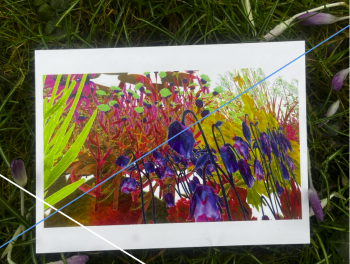Last week we enjoyed the opening of Soil – the world at our feet at Somerset House its sponsor, new to the arts, consumer product giant Mars. It made me reflect on the growth and opportunities in this space, as greater ESG legislation rolls out in Europe and consumers demand more accountability from the companies and brands they buy from.
The exhibition invites audiences to think about soil not just as dirt but rather the ‘priceless foundation of all life’, through a series of art works and commissions, co-curated with the sustainable growing pioneers the Land Gardeners
As Somerset House acknowledges 'change requires multi-national companies operating at scale to play a decisive role' and the sponsorship is being used as a platform to demonstrate Mars’ commitment to global soil health and its mission to transition to one million acres of regenerative agriculture by 2030.
The sponsorship brings together different parts and needs of the company, and in showcasing various green planting initiatives - as well as subtly promoting product from nut bars to dog treats - it is reaching Somerset House’s enviably large GenZ and millennial audience, the consumers of the future, who are passionate about health and sustainability.
According to Deloitte[1] 6 in 10 Gen Z and millennials have felt worried about climate change in the last month, with the majority taking action to minimise their impact on the environment and want businesses to do more to enable consumers to make more sustainable purchasing decisions.
Regulation also demands more sharing of information. The introduction of the Corporate Sustainability Reporting Directive requires environmental, social impact, human rights and diversity reporting. The Financial Conduct Authority has a Nature as well as Net Zero mandate, and Transition Plan reporting is being introduced in the UK, and through the Corporate Sustainability Due Diligence Directive in the EU.
Aligning with artistic content allows companies to engage audiences with sustainability topics in an appealing way, talking about the ‘triple bottom line’ reporting of profit, people and planet through storytelling and often in a positive context. It also offers an opportunity to align with trusted cultural heritage brands and benefit from the expertise within those organisations and significant sector convening power for those looking for influence.
Kew is one of those leaders. Much more than a beautiful botanical garden in West London, the organisation works in over 100 countries with projects including the Millennium Seed Bank, safeguarding 2.4 billion seeds from around the world.
Its corporate partners include P&G and Marks & Spencer adding weight to product eco-credentials. Beautiful exhibitions like last year’s gardens-wide Marc Quinn’s: Light into Life provide that glamorous edge that can broaden appeal.
ZSL is another example, better known for its London and Whipsnade Zoo it is a global, science-led conservation organisation, ‘helping people and wildlife live better together to restore the wonder and diversity of life everywhere’. It has similar potential to engage corporate partners on a range of levels, from the events reaching a large public audience through science expertise and global convening power. Its corporate partners currently include Liontrust Asset Management and brands such as Unilever’s Magnum for its fun Park Nights – but there is more potential here.
For the institutions looking to engage sponsors there is an added bonus. On top of income generation from sponsorship, there is the opportunity to influence change; building relationships which can help promote good behaviours, sharing learnings and amplifying business operations success.
Not surprisingly, the companies with the strongest focus on biodiversity are those for whom it is an integral business need. The consumer products giants like Mars and other food and drinks brands, and the pharmaceutical and life sciences sector, are arguably those that get the most out of being Nature Positive and Carbon Net Zero.
These days, they are also mostly absent from the cultural funding landscape – but they didn’t used to be. We’d like to see more of these big companies building their customer and stakeholder communities through arts and culture, and it’s up to everyone in the cultural sector to tell our own stories and show them how.
Rachel Clarke
[1] Deloitte GenZ and Millennials Survey 2024.
Image - postcard of Alexandra Daisy Ginsberg's Pollinator Pathmaker
